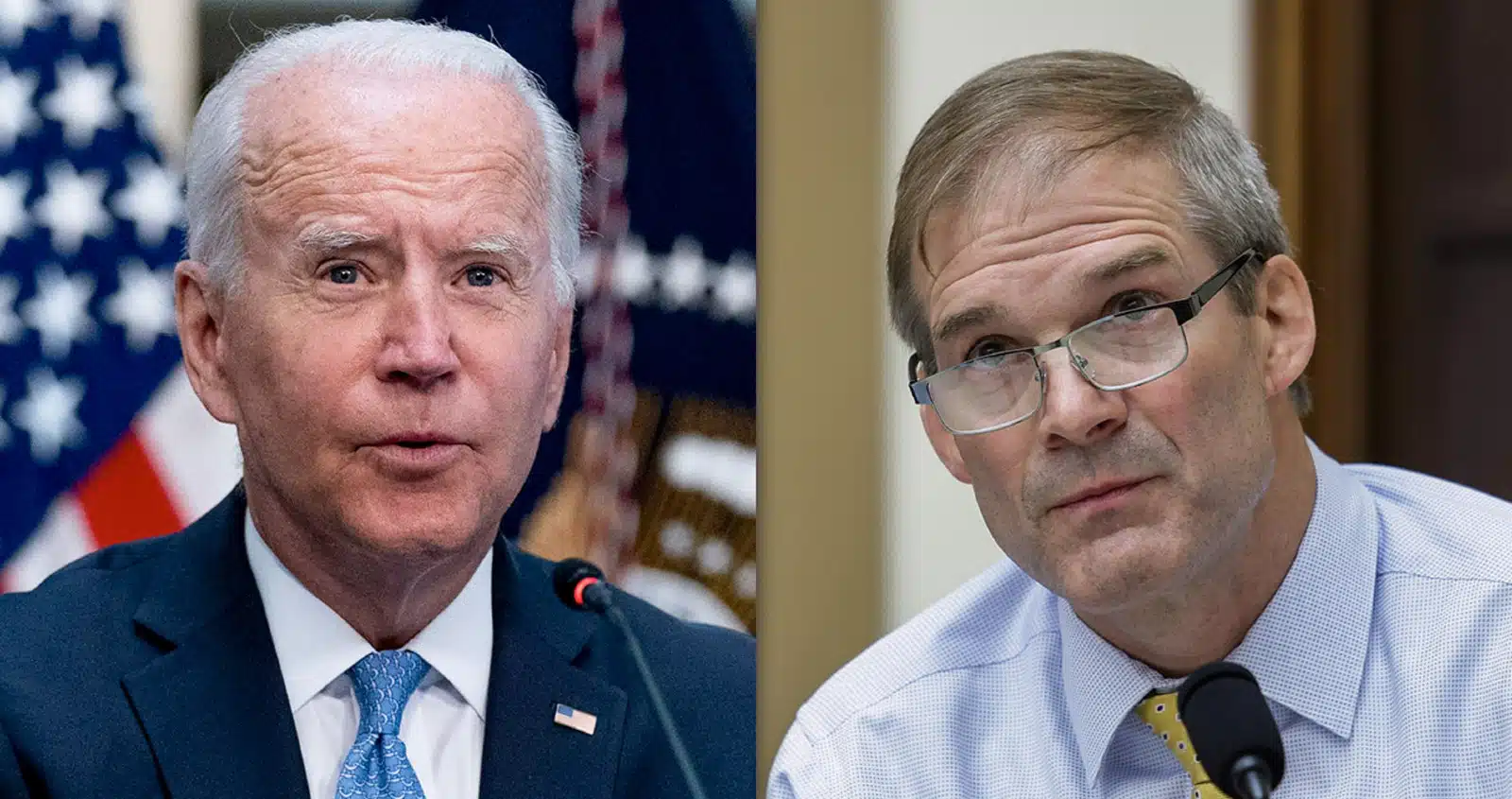A government watchdog has recently leveled accusations against the Biden administration, asserting that an autopen—a mechanized device capable of replicating a signature—was used to sign nearly every executive order issued by former President Joe Biden. The report, issued by the Oversight Project (a division associated with the Heritage Foundation), raises questions about the authenticity of these signatures and the degree of direct presidential involvement in the decision-making process. In light of these claims, concerns have emerged regarding who was effectively responsible for enacting key orders during Biden’s tenure, with some critics arguing that the practice may mask cognitive decline or allow unelected aides to influence policy without transparent oversight.
This article examines the allegations in detail, reviews historical precedents for autopen use in government, and discusses the broader political, legal, and administrative implications. The report also reviews commentary from high-ranking officials such as House Speaker Mike Johnson and Missouri Attorney General Andrew Bailey, who have questioned the integrity of the presidential signings and the overall management of executive power. The analysis concludes with reflections on accountability and the potential ramifications for public trust in governmental institutions.
n recent months, a government watchdog has brought to light concerns over the Biden administration’s reliance on an autopen to sign executive orders. Autopens, which are electromechanical devices designed to accurately reproduce a signature, have long been a tool for high-ranking officials when faced with the need to execute a large volume of documents. While their use is legally sanctioned under certain conditions, the application of such devices in the context of high-stakes executive orders has raised a number of troubling questions. Critics argue that this practice obscures the true source of decision-making, undermines accountability, and potentially signals that critical policy decisions may have been influenced by staff rather than by the president.

The watchdog’s report alleges that all of the executive orders bearing Biden’s signature—apart from the distinctive letter in which he announced his withdrawal from the 2024 presidential race—appear to have been executed using an autopen. This observation has ignited a debate about the authenticity of the signature on these documents and whether such practices compromise the perceived legitimacy of presidential actions. The report further contends that this method of signing documents may indicate that the president was not actively involved in reviewing and endorsing each order, thereby raising concerns about his cognitive state and the possibility that unelected officials might have been making key decisions.
In what follows, this article delves into the historical and legal context of autopen usage, provides a detailed rephrasing of the allegations and reactions from key political figures, and discusses the potential long-term implications for governance and accountability in the executive branch.

Visual Comparisons and Signature Analysis
The report also includes visual comparisons of Biden’s signature across various documents. According to the watchdog, the consistent use of an autopen-generated signature on nearly all executive orders, contrasted with the distinctively different style seen on the withdrawal letter from the 2024 race, is presented as evidence that the signing process for routine orders did not involve the president’s direct input. This discrepancy in signature style forms a central pillar of the argument, suggesting that while the president might have personally signed documents of particular political significance, routine and possibly more consequential executive orders were executed via mechanized means.
🚨 Autopen Update 🚨
We analyzed Biden’s Jan. 19, 2025 “pardons” for:-Biden Family Members
-Anthony Fauci
-General Milley
-J6 Committee
-Gerald LunderganThey all have the same exact Biden autopen signature https://t.co/jc6mkx37il pic.twitter.com/8VeBDwLNv7
— Oversight Project (@OversightPR) March 11, 2025
🚨Biden Autopen Pardons on VACATION?🚨
Who is behind this autopen on 12/30/2022 that pardoned six criminals (with the exact same autopen signature) while Joe Biden was vacationing and golfing in the U.S. Virgin Islands?
Note they all say they are “Signed in the City of… https://t.co/b0SEtalm4N pic.twitter.com/dN7BbVOiVj
— Oversight Project (@OversightPR) March 10, 2025
House Speaker Mike Johnson’s Recollection
In addition to the watchdog report, political figures have come forward with their own accounts that further fuel the controversy. House Speaker Mike Johnson, a Republican from Louisiana, recalled an incident that underscored his longstanding concerns about who was truly controlling the executive branch during Biden’s presidency. According to Johnson, during a meeting at the Oval Office in early 2024, President Biden appeared genuinely unaware of an executive order he had supposedly signed—a pause on the export of liquefied natural gas (LNG) to Europe.
The LNG Export Pause Incident
One of the most illustrative examples cited by Johnson was the incident involving the pause on LNG exports to Europe. Johnson contended that during the meeting, he directly questioned President Biden about the rationale behind the decision, emphasizing that such a move was inconsistent with the interests of U.S. allies and could potentially aid adversarial forces such as Russia. According to Johnson, the president’s response was both curt and uninformative—he simply stated, “I didn’t do that.” This admission, Johnson claimed, left him deeply unsettled and reinforced his concern that someone other than Biden was orchestrating key policy decisions.
Johnson’s recollection of this incident serves to reinforce the narrative that the president may not have been fully in control of the executive actions attributed to him. The testimony adds another dimension to the controversy, suggesting that the delegation of signing authority via an autopen might have been symptomatic of a larger issue: a distancing of the president from the policy-making process. Such a scenario, if proven true, could have far-reaching implications for the integrity of executive decision-making and the overall accountability of the administration.
Broader Implications for the Biden Administration
The accounts provided by Johnson and other critics raise fundamental questions about the nature of executive power and the extent to which the president was involved in the actual governance of the country. If an autopen was indeed used as a tool to circumvent the president’s direct input, then the entire process of signing executive orders—and by extension, executing policy—might be called into question. The allegations suggest that a key component of presidential accountability may have been undermined, with potential consequences for both domestic policy and international relations.
Andrew Bailey’s Public Letter
Adding a further layer of complexity to the controversy, Missouri Attorney General Andrew Bailey has publicly urged the U.S. Department of Justice to investigate whether aides to President Biden concealed evidence of his cognitive decline. In his letter addressed to Inspector General Michael E. Horowitz, Bailey argued that the president’s diminished mental capacity should have activated a succession process under the 25th Amendment. According to Bailey, the failure to do so—coupled with the widespread use of an autopen to sign critical documents—casts serious doubts on the legal validity of many of Biden’s executive actions.
Expert Opinions and Legal Perspectives
Legal Commentary on the Use of Autopens
Legal experts have weighed in on the controversy, emphasizing that while the use of an autopen is legally permissible, its application in high-stakes policy decisions raises important questions about oversight and accountability. Some legal scholars argue that the mere fact of using an autopen does not automatically imply a lack of presidential involvement. However, when the practice is coupled with other indicators of a potentially diminished role—such as inconsistent signature styles and testimonies from high-ranking officials—the cumulative evidence may suggest that the president’s direct oversight was compromised.
The Debate Over Cognitive Decline
The allegations regarding President Biden’s cognitive state have also sparked a heated debate among legal analysts. While it is difficult to ascertain the president’s mental acuity solely from the method of signature execution, the use of an autopen in conjunction with claims of unawareness during critical meetings provides fodder for those arguing that the president may have been, at times, disengaged from key decision-making processes. Critics assert that this detachment could have far-reaching implications, potentially undermining the legal validity of certain executive actions if it is shown that they were executed without the president’s fully informed consent.


